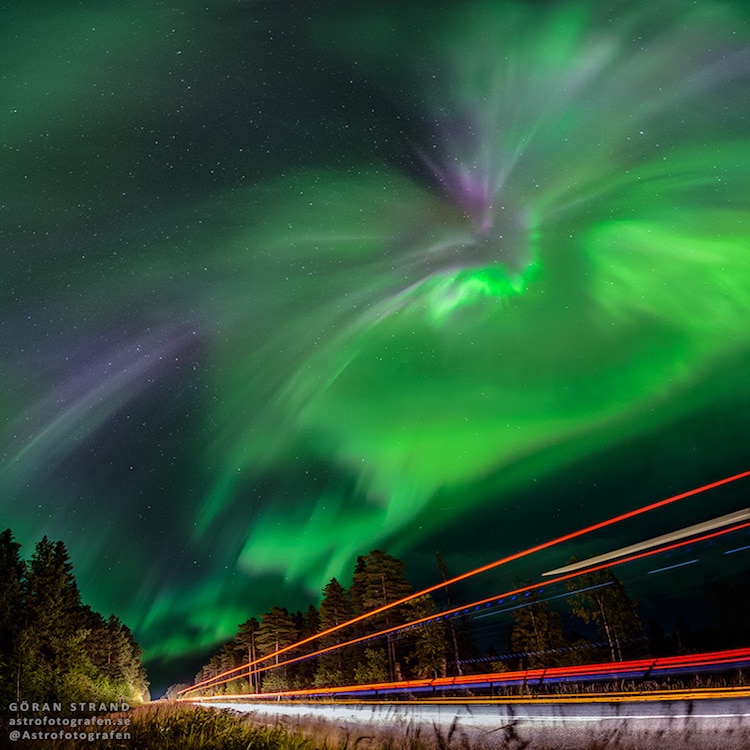
Photo: Göran Strand.
This post may contain affiliate links. If you make a purchase, My Modern Met may earn an affiliate commission. Please read our disclosure for more info.
From the beginning of human civilization, we’ve been fascinated by what lies beyond our sky. Nighttime is when it’s in its most spectacular state; the dazzling stars glitter from the dark abyss and only compound our wonder of the galaxy. Now, with advancements in technology, we’re able to answer the questions that have plagued us for centuries. Through astrophotography, photographers can record celestial objects and large patches of the night sky.
What is Astrophotography?
Astrophotography is one of the earliest types of scientific photography. The specialized field first appeared in the mid-19th century from the efforts of amateur astronomers. As you might imagine, there were many technological difficulties—from sagging telescopes to photographic processes that were too slow to record anything. Despite these challenges, the first successful photograph of the moon emerged in 1840. John William Draper, a New York University Professor of Chemistry, spent 20 minutes capturing a daguerreotype photo from a reflecting telescope.
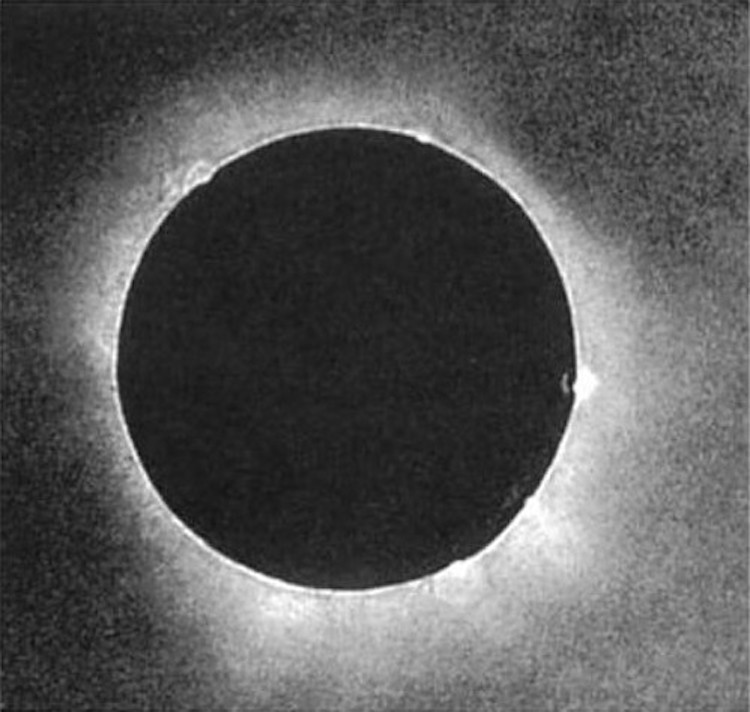
The first solar eclipse photo taken on July 28, 1951 by Berkowski.
The Sun proved trickier. Shortly after the success of Draper, others tried to capture a glimpse of the star. Italian physicist Gian Alessandro Majocchi attempted to document a total eclipse in 1842, but it wasn’t until 1851 that the Sun was successfully imaged. The group effort was led by Dr. August Ludwig Busch, who instructed a local daguerreotypist named Berkowski to image an eclipse over Königsberg (now Kaliningrad), Russia. (Dr. Busch observed elsewhere.) Berkowski attached a camera to a heliometer—an instrument designed for measuring the Sun’s diameter. He exposed the daguerreotype plate for 84 seconds in the telescope’s focus and successfully obtained the incredible image.
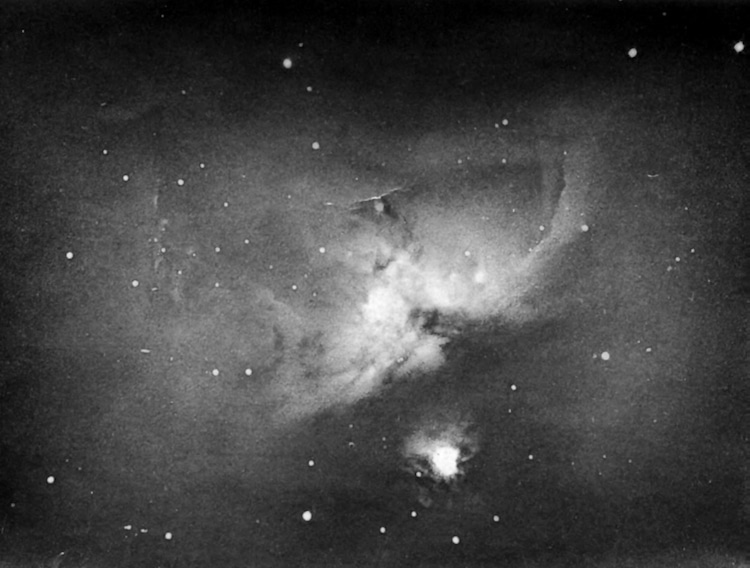
Andrew Ainslie Common’s photograph of a nebula—the first to record stars that were too faint for the human eye to see.
The turning point for astrophotography was the advent of dry plate photography—better known as the gelatin process. It was a simpler and cheaper approach, which allowed for more people to experiment and try it. In 1883, amateur astronomer Andrew Ainslie Common used dry plate photography to document a nebula from his backyard in Ealing, England. He was able to capture multiple images, some of which took up to an hour to expose. These photographs were significant because they were the first time someone had documented stars that were too faint for the human eye.
Modern Astrophotography
Since the late 19th century, astrophotography has been continually refined. Charge-coupled devices (CCD) were invented in the 1970s, which used “imaging sensors” to translate data into digital images. Still used today, CCDs are super light-sensitive and can record a wide visual field. They are configured on multi-mirror and segmented telescopes.
It’s impossible to talk about astrophotography without mentioning NASA. The organization has always paved the way for exciting scientific advancements and discoveries in space. And in the first few months of 2017, they’ve made developments that are sure to delight to anyone interested in astrophotography. Their spacecrafts called Cassini and Galileo have had an in-depth look at Saturn and Jupiter, respectively.
SATURN
The unmanned Cassini spacecraft began studying Saturn in 2004. It’s been busy; every week since November 2016, it has gathered information about the planet’s rings. In February 2017, it was halfway through its 20 orbits that document them at an increasingly close range. The results are both educational and awe-inspiring, showcasing the rich details of ring A and ring B. While they look smooth and even from far away, the Cassini’s eye-opening photos reveal ridges, waves, and free-flowing matter around them.
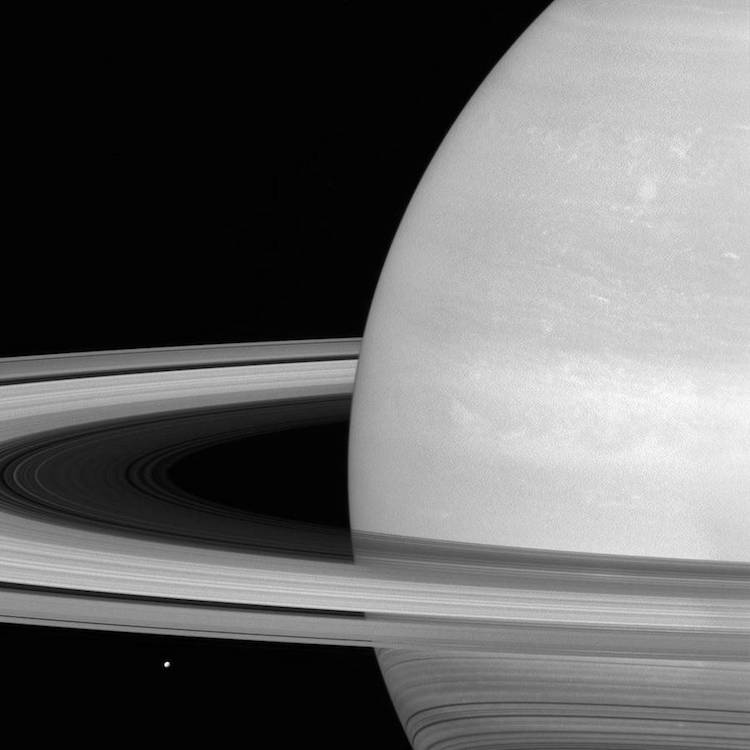
Saturn’s ring as the dwarf its moon, Mimas. Image captured in July 2016 by the Cassini spacecraft.
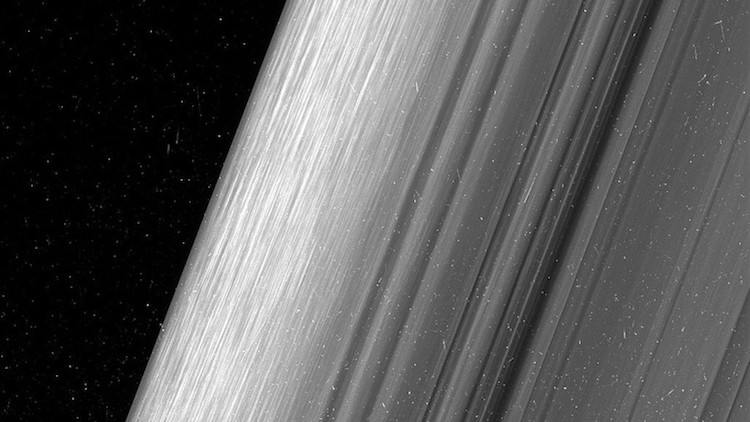
Saturn’s outer ring B.
On April 26, 2017, the spacecraft started its “Grand Finale” mission. Cassini is currently in the midst of 22 orbits that’ll eventually lead it through the gap between Saturday and its rings. The risky attempt is sure to reveal even more about the iconic planet.
Read more: Incredible Photos Reveal the Rings of Saturn with Unprecedented Detail
JUPITER
NASA’s Juno space probe has had a long journey. Over the course of five years, it has traveled 1.74 billion miles before entering Jupiter’s polar orbit on July 5, 2016.
To capture the Solar System’s largest planet, Juno is armed with the aptly-named Junocam, a visible light camera and telescope that sends photographs of Jupiter back to Earth. Here, the RAW images are published for amateur astronomers to download and retouch.
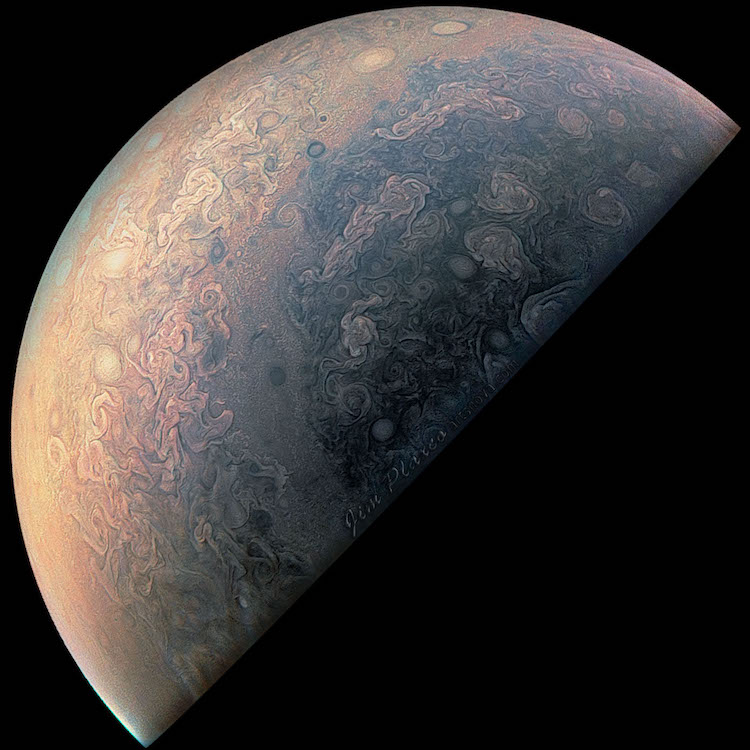
Junocam Image Set 893 – Polar Time Lapse Sequence. Photo: Jim Plaxco, artsnova.com
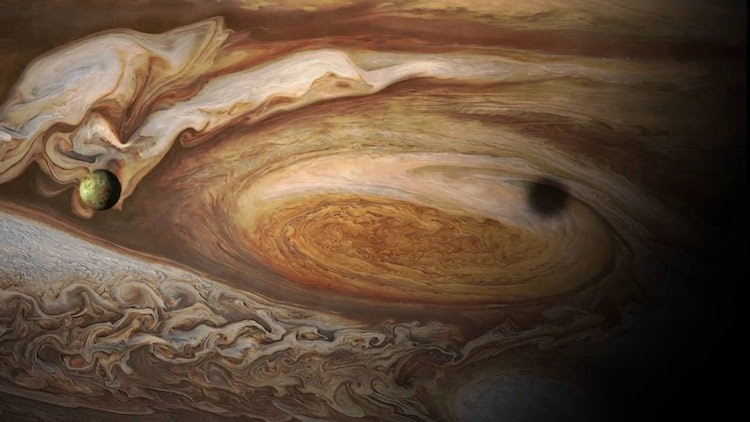
Great Red Spot. Photo: Liroma-52
Every time the Junocam travels by Jupiter, researchers gain new insight that leads to interesting discoveries. This is, in part, thanks to Junocam’s engineering. It has a 58-degree field of view with four filters. “Junocam is a wide-angle camera designed to capture the unique polar perspective of Jupiter offered by Juno’s polar orbit. Junocam’s four-color images include the best spatial resolution ever acquired of Jupiter’s cloud tops,” researchers explain in a paper titled Junocam: Juno’s Outreach Camera. “Junocam is on the spacecraft explicitly to reach out to the public and share the excitement of space exploration. The public is an essential part of our virtual team: amateur astronomers will supply ground-based images for use in planning, the public will weigh in on which images to acquire, and the amateur image processing community will help process the data.” The plan was for it to explore until 2018 but it is still active as of 2021.
Read more: More Stunning Photos of Jupiter Released by NASA
Astrophotography for the Rest of Us
The average photographer, no matter how hi-tech they might be, can match the engineering magnitude of NASA projects like Junocam. But, that doesn’t mean these astrophotographers can’t capture their own stunning images of the cosmos here on Earth. Unobstructed from light pollution, photographers including Daniel Kordan, Göran Strand, and Neil Zeller illuminate endlessly starry skies and document beautiful phenomena like the Aurora Borealis.
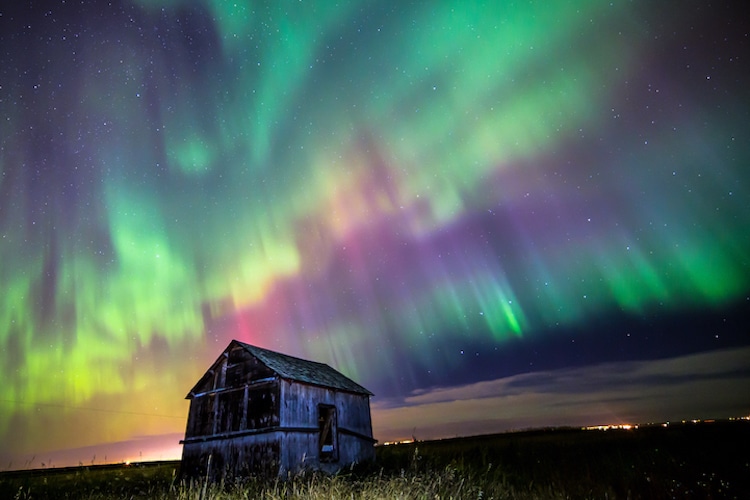
Photo: Neil Zeller
“To capture the night sky and all its wonder is almost meditative to me,” Zeller tells us. “When shooting out in the dark, mostly all alone, you have to slow down and methodically set your camera, focus, and choose your composition. It’s not like any other photography where you are more reactive to the location, the people or events, but out in the night, you have total control over how, when, and where you capture whatever it is you are shooting.”
How to Take Your Own Astrophotography
You too can capture the distant stars. As with other fields of photography, you can get super hi-tech or keep it simple. Some serious astrophotographers will invest in star trackers and lens designed especially for astrophotography. But, you don’t need special equipment to produce these types of images—just good quality gear and photography know-how.
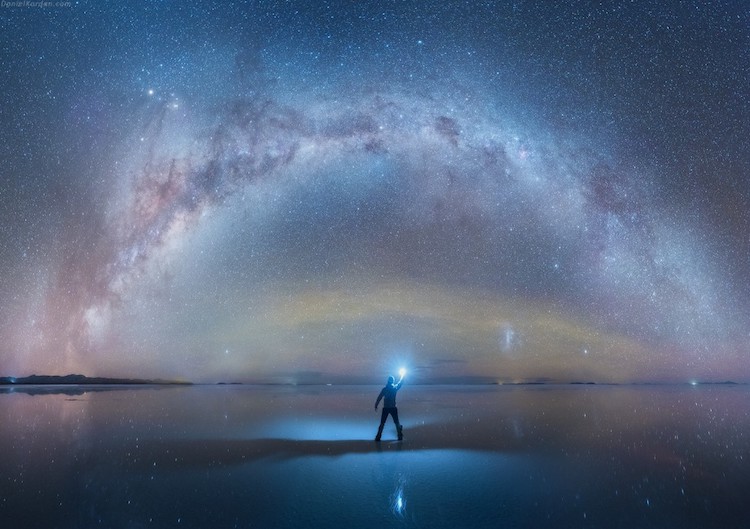
Photo: Daniel Kordan
To reveal anything in the night sky, you’ll need to capture a lot of light for an extended period of time. If not, your pictures will turn out dark. But, if your camera moves or the shutter is open for too long, the stars will look more like comets. Tiny tweaks in aperture and movement can make a big difference in the final photo.
Best camera for astrophotography: For DSLR cameras, it’s always best to have a new model when shooting at night. They have the best “signal-to-noise” ratio that allows for cleaner shadows that won’t appear grainy. The Nikon D750 is one such camera. If you’re using a film camera, select a film that’s medium speed; it’ll still record dim stars but will cut back on the grain and noise.
Best lens for astrophotography: Try wide-angle (and ultra wide angle) lens for the best results. Some of the best astrophotography lens include the Tamron 15-30mm f/2.8, the Sigma 20mm f/1.4 and the Nikon 20mm f/1.8.
You can have the top camera and lens, but what matters the most is location. Some photographers will trek for miles in order to find a place that’s completely dark, because even the light of nearby towns can show up in your photos. For his series Lux Noctis, Reuben Wu would scout locations in the middle of desert during the day and then hike back to them with full gear in tow.
Learn Astrophotography From the Pros
Online classes are an easy way to learn the basics of astrophotography at your own pace. Check out some of the exciting offerings from sites like Craftsy and CreativeLive.
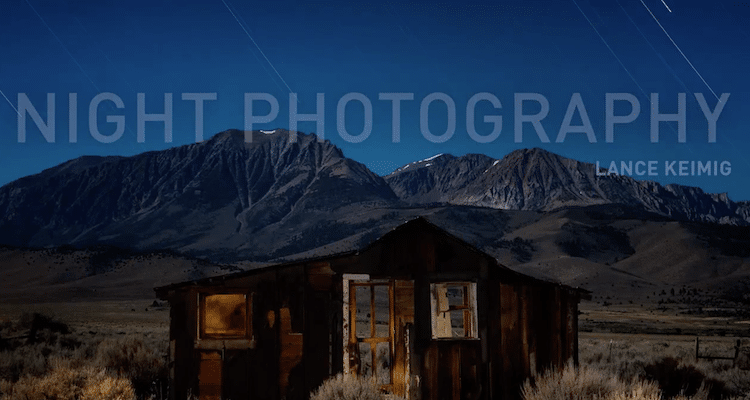
Learn How to Shoot Night Photography, Craftsy
- Night Photography Fundamentals, CreativeLive: Capture incredible landscapes in the dark.
- Night Photography Critique, CreativeLive: Gain insight into improving your work from two night photography legends.
- Beginner’s Guide to Astro Landscape Photography, CreativeLive: Figure out how to get started with astrophotography, including how to scout for locations and what equipment you’ll need.
- Astro Landscape Photography, CreativeLive: Learn how capture the Milky Way, star trails, and even meteor showers.
Check out these contemporary astrophotographers revealing the wonders of the universe through their incredible images.
NEIL ZELLER
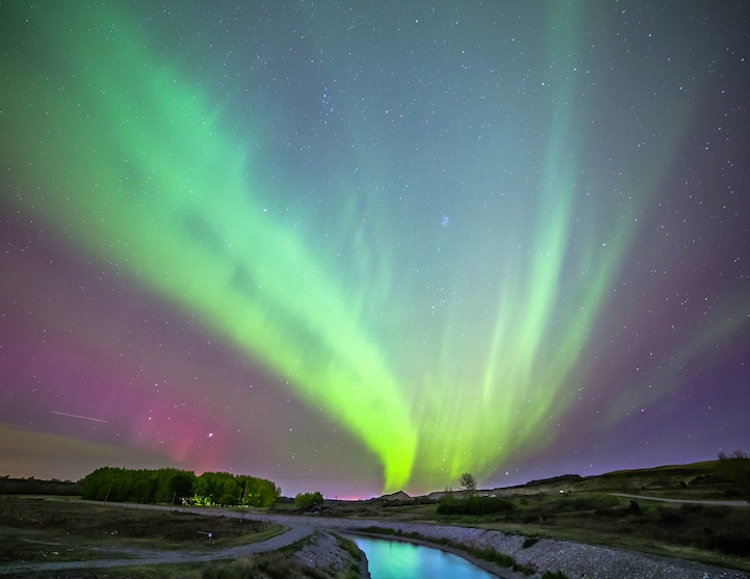
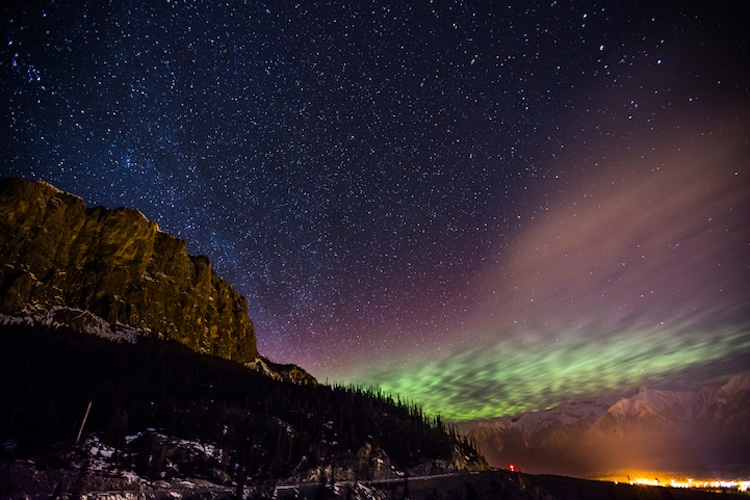

Neil Zeller has photographed everything from corporate events to cityscapes to remote mountains, but ultimately his heart belongs to the night sky and all of its breathtaking wonders. He says, “My goal is to capture in my camera, the story my eyes could never tell you.”
Follow Neil Zeller: Website | Instagram
MIKKO LAGERSTEDT

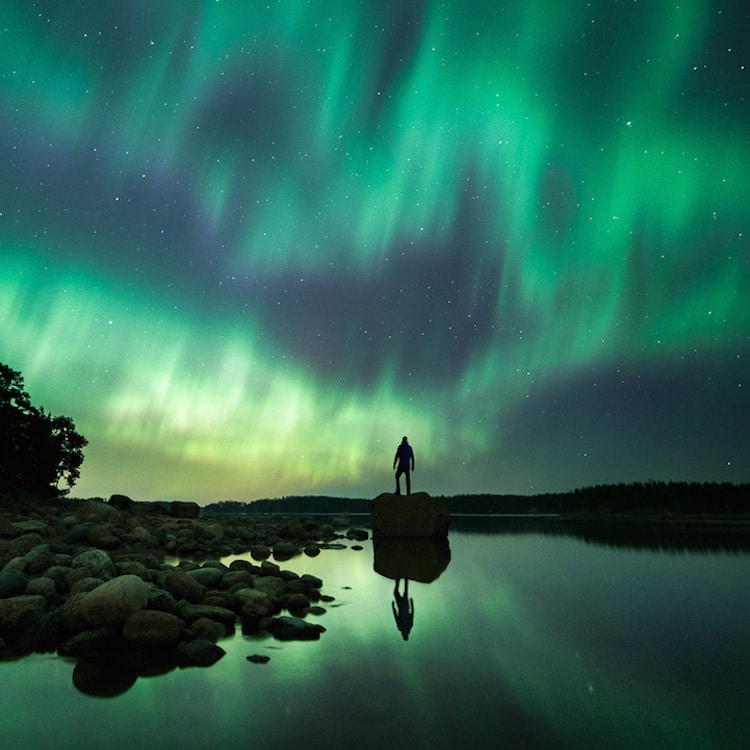
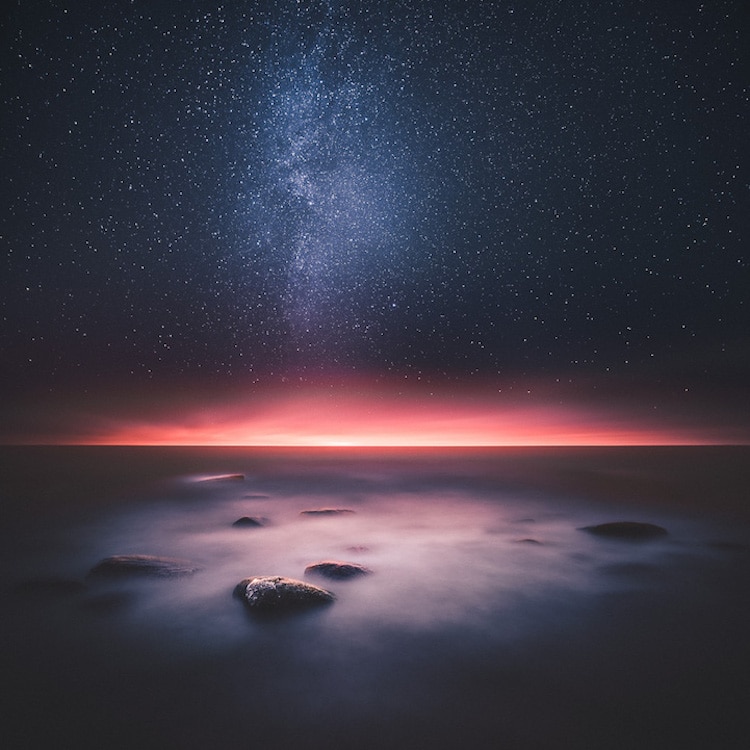 Mikko Lagerstedt is completely self-taught, photographing since 2008 when he was struck by a moment of inspiration while driving to a relative’s cabin one day. “I just had to stop and watch this beautiful moment,” he shares, “and then I realized that I wanted to start capturing these kinds of moments.” Lagerstedt has been incredibly open about sharing his editing process and secrets of the trade with other budding photographers on his website, where he frequently posts helpful tutorials and tips.
Mikko Lagerstedt is completely self-taught, photographing since 2008 when he was struck by a moment of inspiration while driving to a relative’s cabin one day. “I just had to stop and watch this beautiful moment,” he shares, “and then I realized that I wanted to start capturing these kinds of moments.” Lagerstedt has been incredibly open about sharing his editing process and secrets of the trade with other budding photographers on his website, where he frequently posts helpful tutorials and tips.
Follow Mikko Lagerstedt: Website | Instagram
DAVID LANE

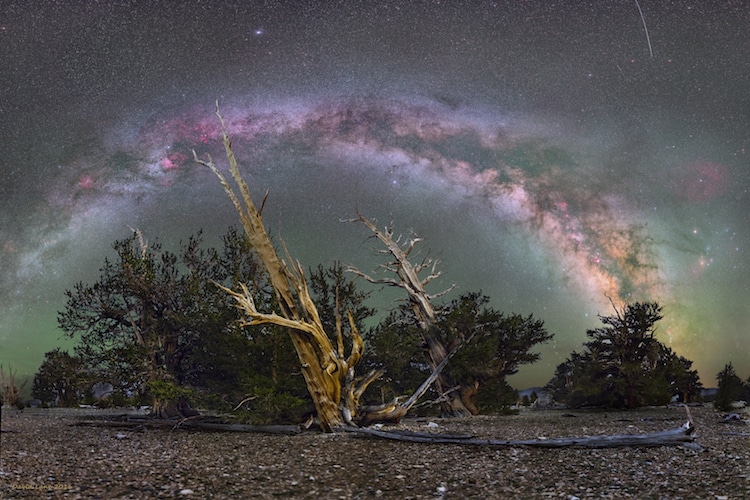
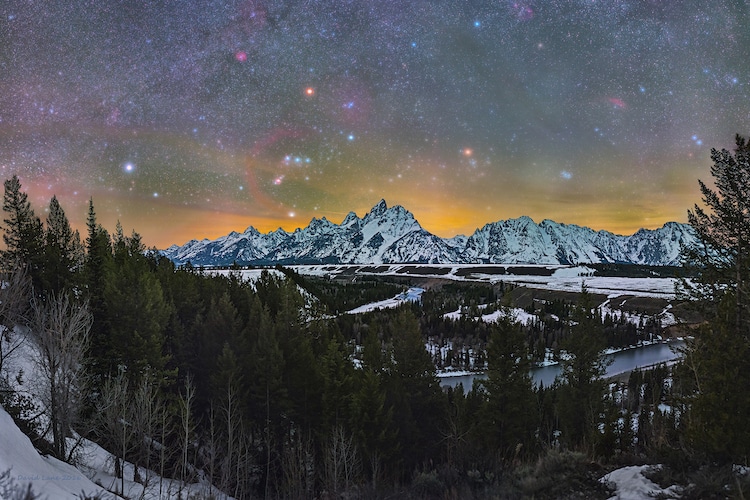 David Lane captured Yellowstone National Park’s night sky in photos that will take anyone’s breath away. Right after a storm had passed through the Abyss Pool area, the artist reached for his camera and captured the incredible, Milky Way-filled sight before him. The astrophotographer shares words of wisdom to those who want to follow suit: “Get away from the light, drive out 20–30 miles out of town, and look up on a clear dark night.”
David Lane captured Yellowstone National Park’s night sky in photos that will take anyone’s breath away. Right after a storm had passed through the Abyss Pool area, the artist reached for his camera and captured the incredible, Milky Way-filled sight before him. The astrophotographer shares words of wisdom to those who want to follow suit: “Get away from the light, drive out 20–30 miles out of town, and look up on a clear dark night.”
Follow David Lane: Website
JUSTIN NG
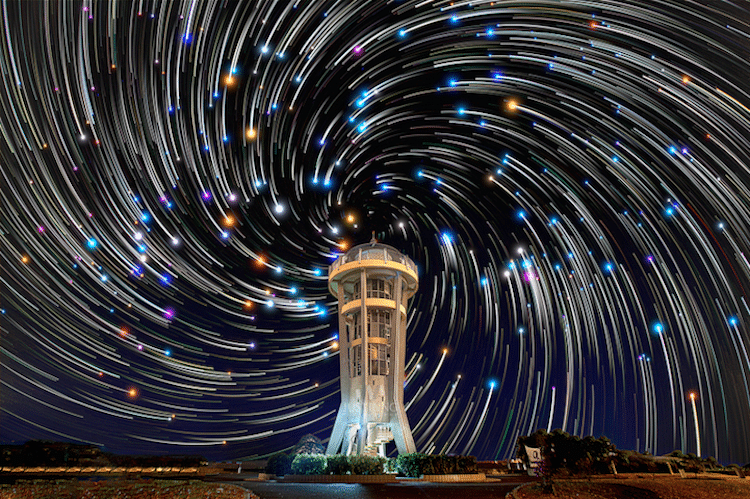
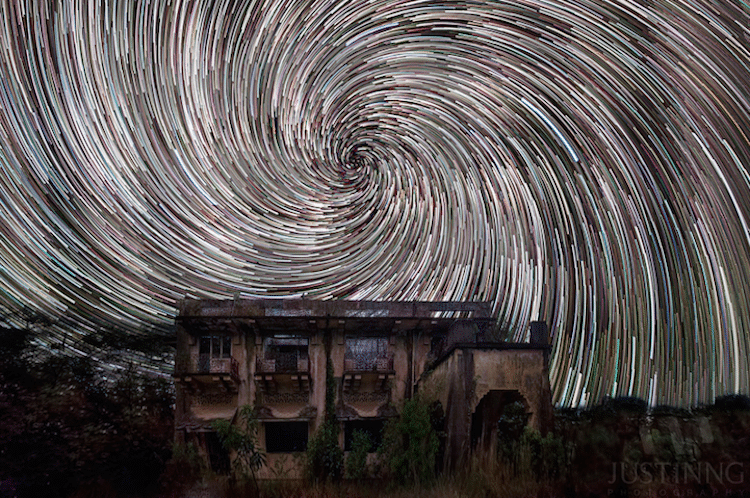
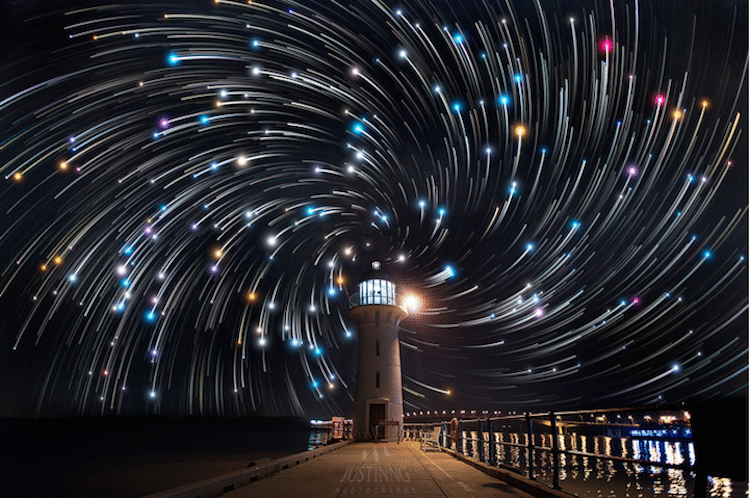
Singapore-based photographer Justin Ng captures breathtaking photos of the night sky that include dazzling composite images of curving star trails over various landscapes. The self-taught photographer enhances his images in Photoshop, digitally stacking individual photographs to create his otherworldly composite images. His one-of-a-kind images are particularly unique because of the unusual colors and distinct spiral formations of the star trails.
Follow Justin Ng: Website | Instagram
GÖRAN STRAND
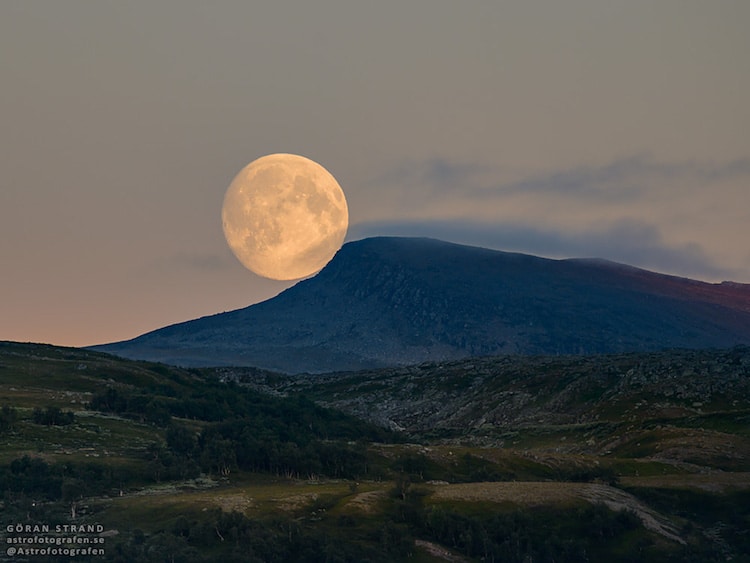

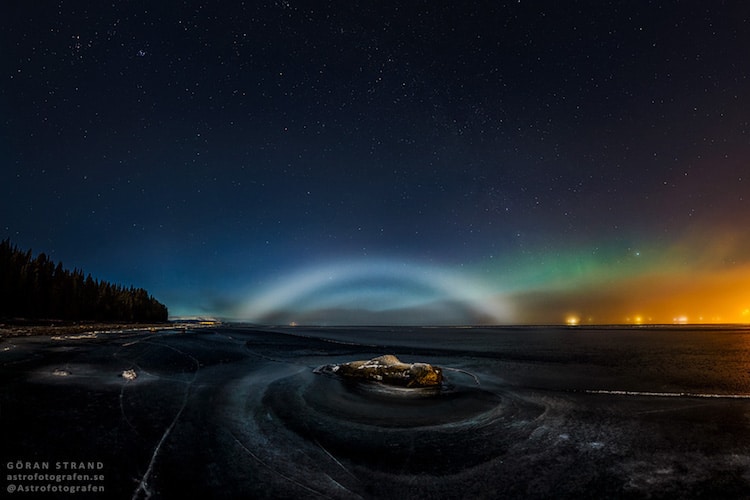
Swedish photographer Göran Strand specializes in astrophotography. He’s shot a wide variety of rare weather conditions from colorful images of the Northern Lights to solar halos and a fog bow. His work has been featured in a Coldplay music video and has even been published as stamps in Sweden.
Follow Göran Strand: Website | Instagram
DANIEL KORDAN
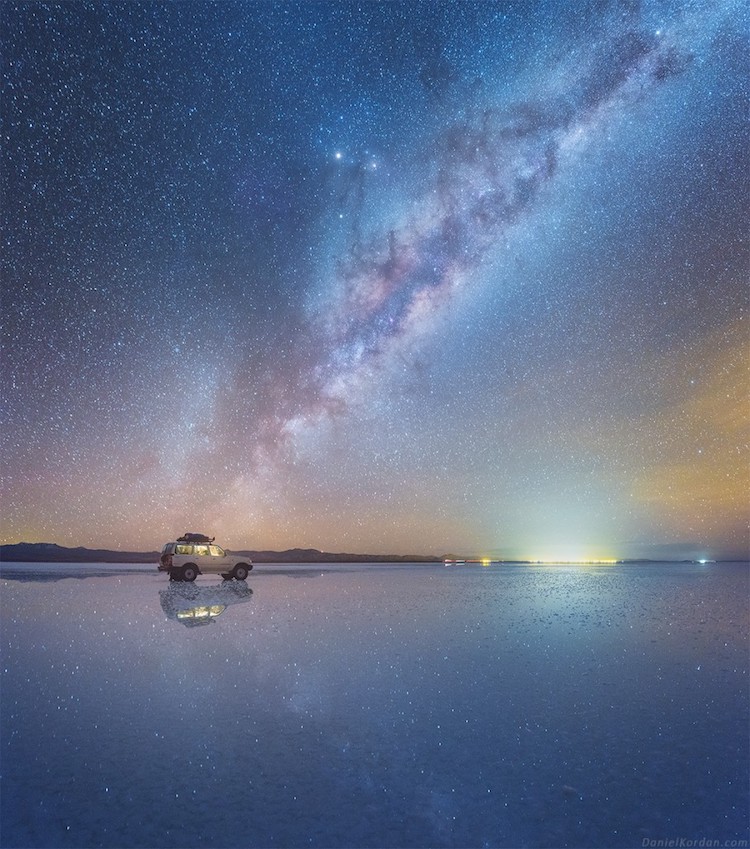
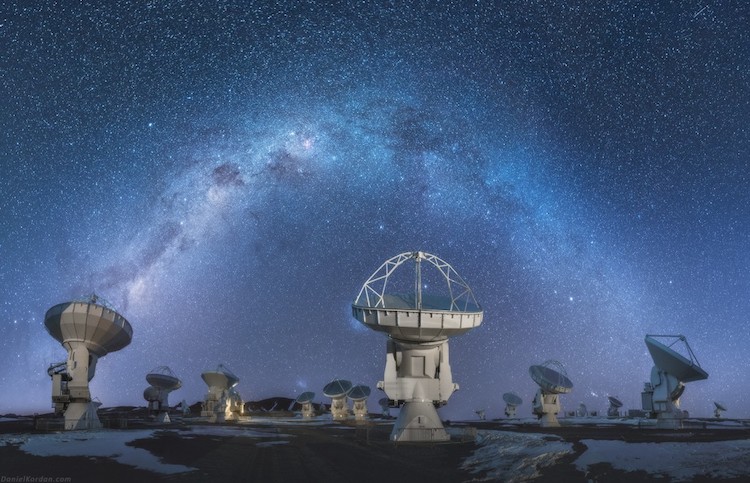

Russian photographer Daniel Kordan considers the world his home as he guides workshops that show how to capture majestic scenery.
Follow Daniel Kordan: Website | Instagram
BEN COFFMAN
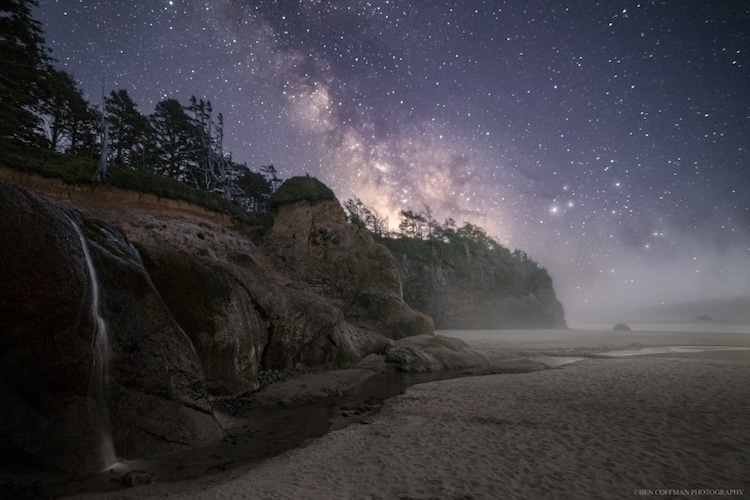
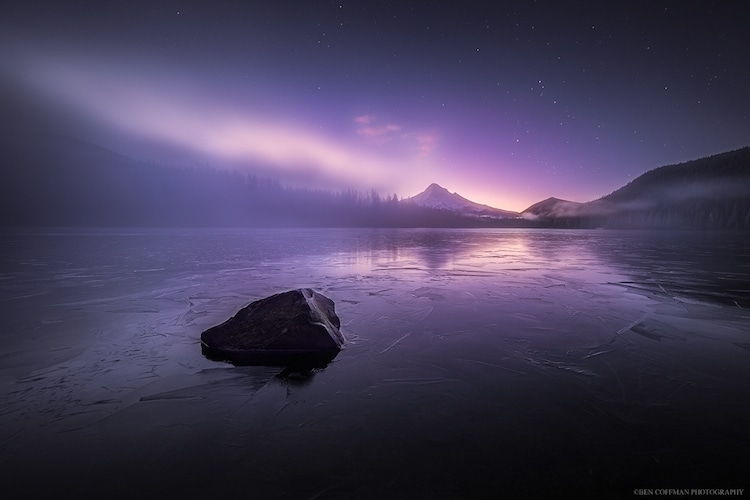
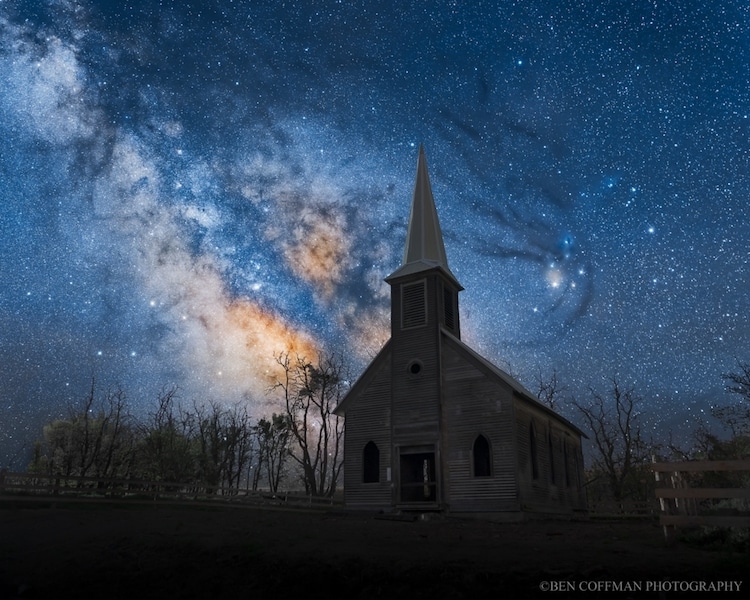
Portland-based photographer Ben Coffman spends most of his nights capturing the starry skies of Oregon. Focusing on nighttime photography gives Coffman a different approach with fresh perspectives to familiar places. The Portland-based photographer often shoots during odd hours to achieve awe-inspiring, long exposure shots.
Follow Ben Coffman: Website | Instagram
MIKE WILSON
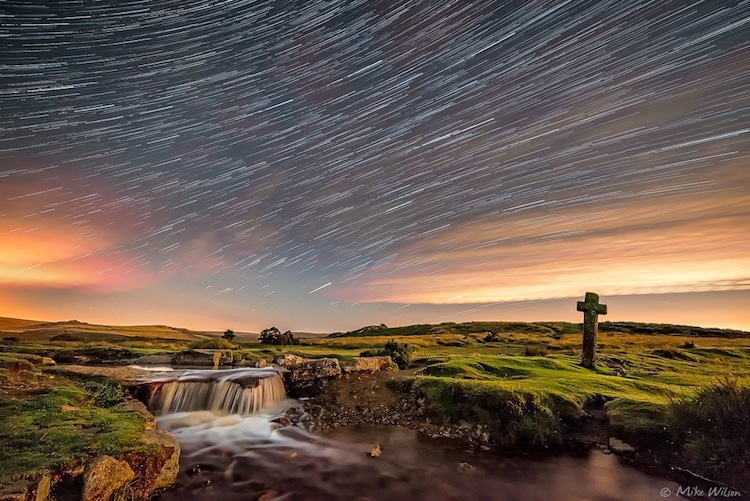
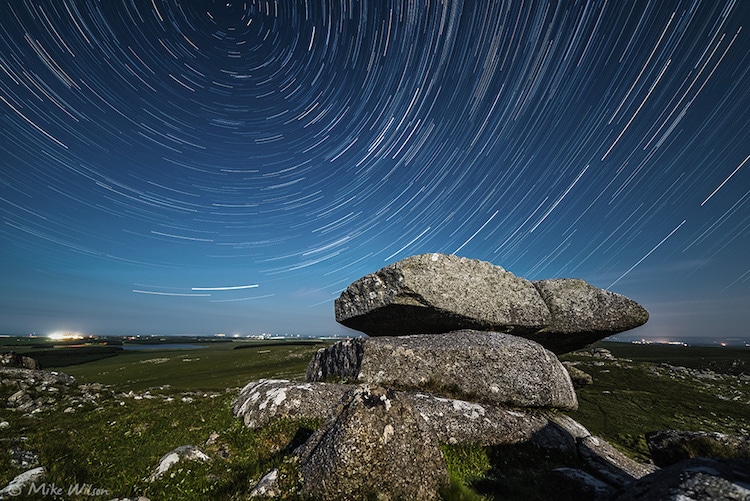
 Mike Wilson is a self-taught photographer from the UK. He grew up surrounded by amazing countryside, but only began to capture the beauty of the landscapes around him when he began to travel. Wilson then developed the passion for capturing the incredible vistas the world has to offer. He has grown his portfolio from landscapes and nightscapes to aerial photography.
Mike Wilson is a self-taught photographer from the UK. He grew up surrounded by amazing countryside, but only began to capture the beauty of the landscapes around him when he began to travel. Wilson then developed the passion for capturing the incredible vistas the world has to offer. He has grown his portfolio from landscapes and nightscapes to aerial photography.
Follow Mike Wilson: Facebook
OSCAR KESERCI
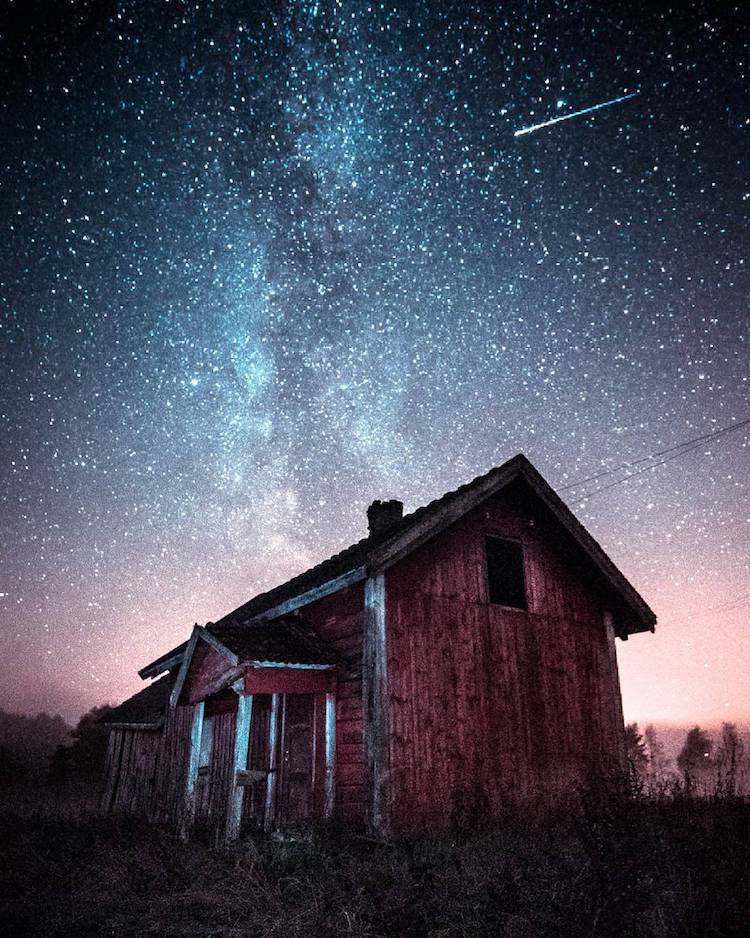
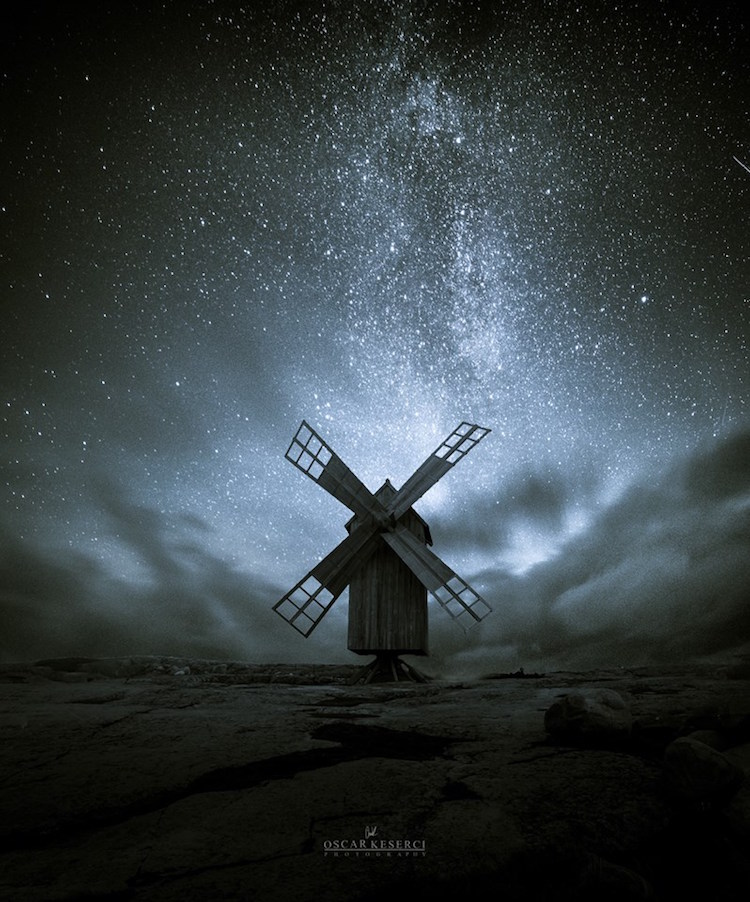
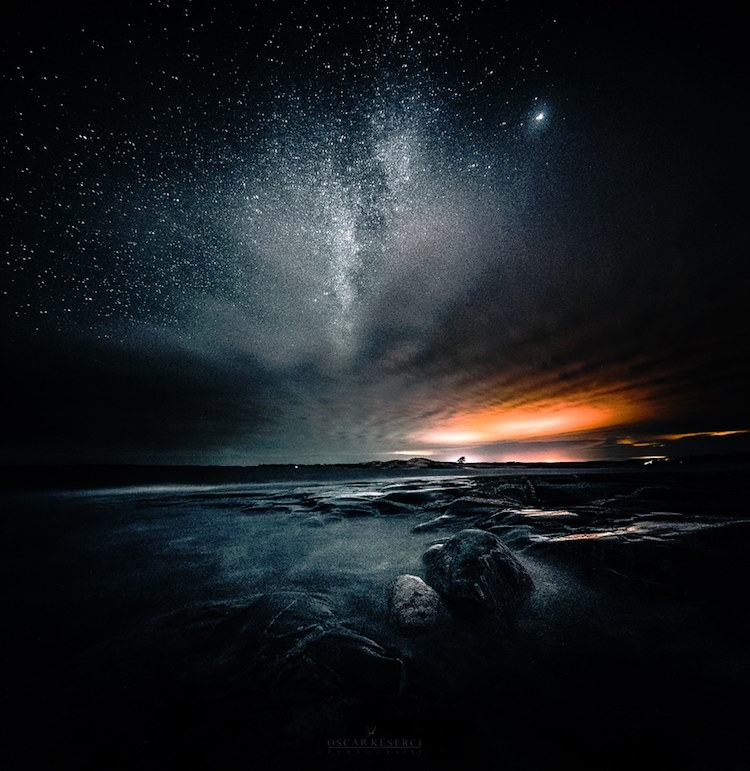
Finnish photographer Oscar Keserci offers us glimpses of tranquil starry nights. The self-taught photographer captures breathtaking images that showcase dark skies full of millions of brilliant celestial points.
Follow Oscar Keserci: Website | Instagram
CHRIS KOTSIOPOULOS

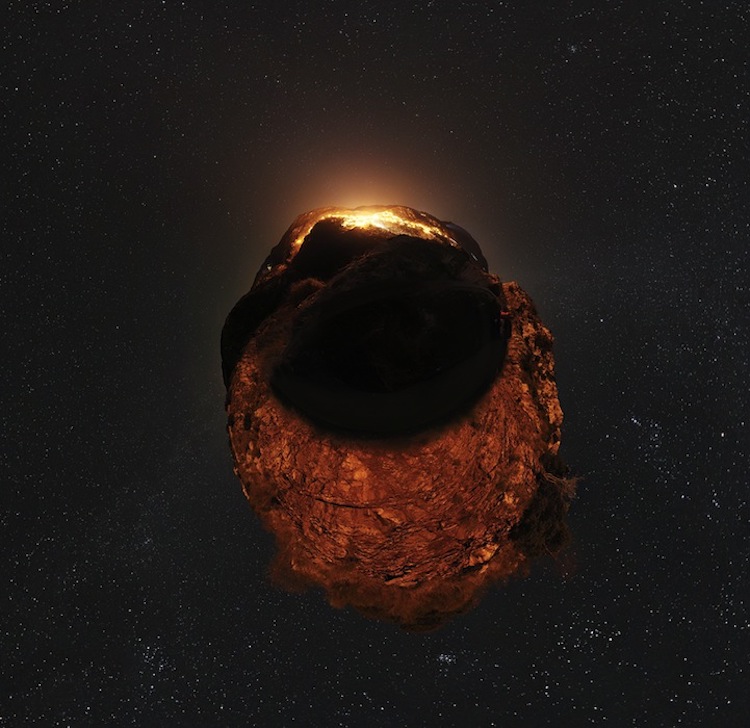
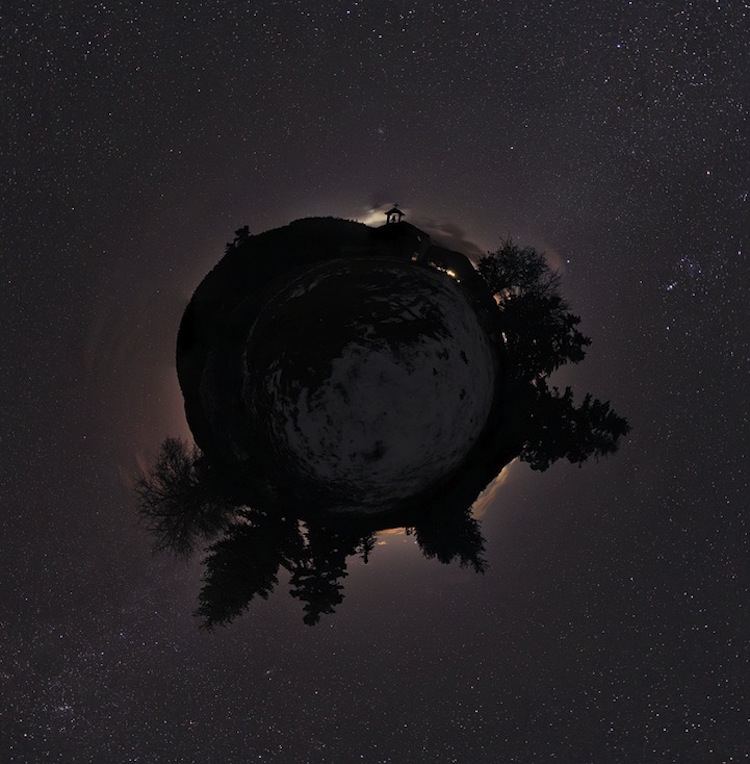
Greek photographer Chris Kotsiopoulos captures celestial wonders combined with ancient temples, castles, monuments, and gorgeous Greek landscapes in 360 degree panoramas. Some of his images even take an entire 24-hour period to shoot.
Follow Chris Kotsiopoulos: Website
JASON DE FREITAS
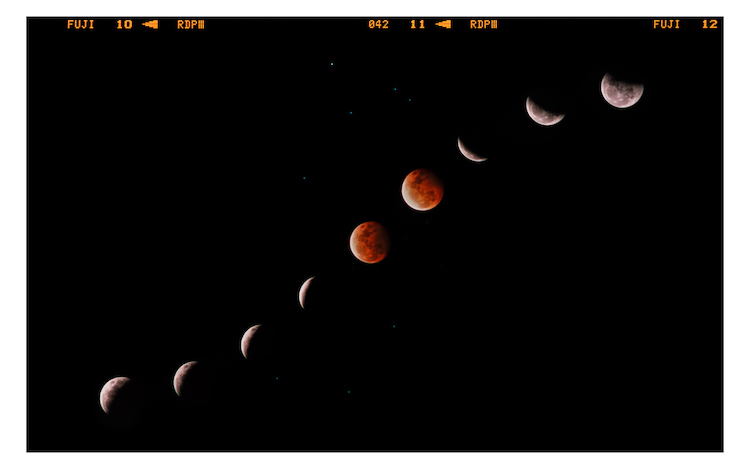
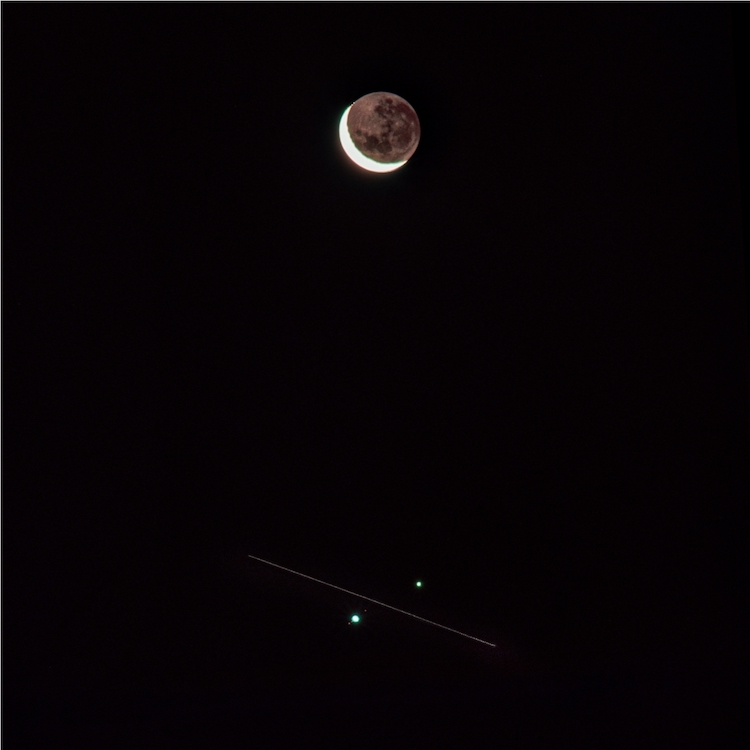
Australian Photographer Jason De Freitas is well known for his analog astrophotography. De Freitas chooses to work in-camera—versus working digitally on Photoshop—to challenge himself. He knows that with plenty of research and ample planning, the result is always worth it.
NICHOLAS BUER
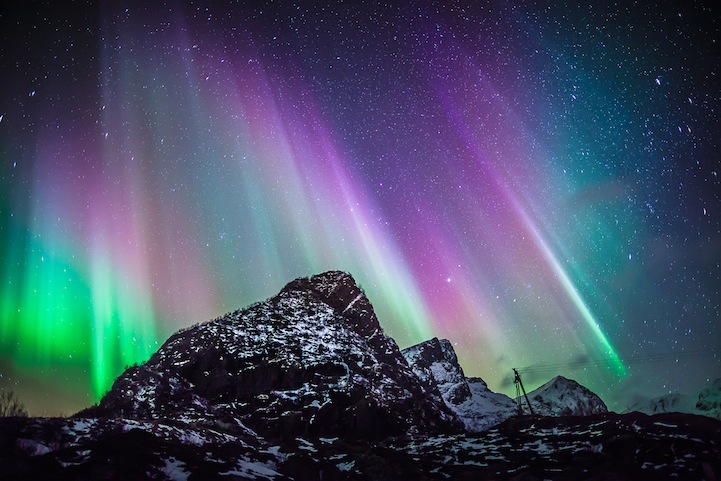
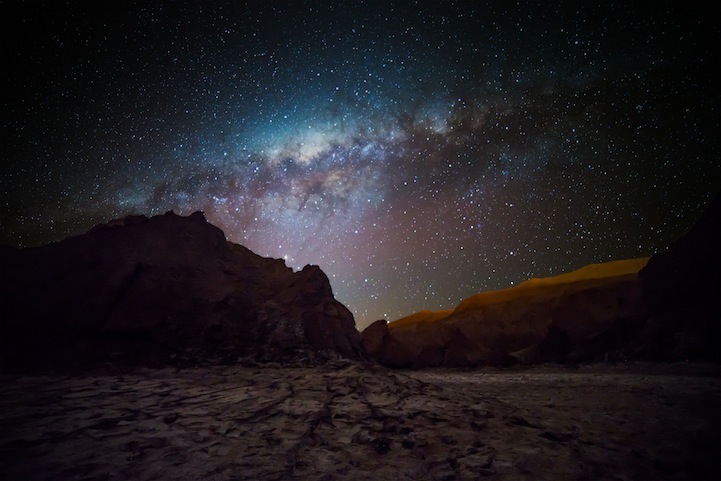
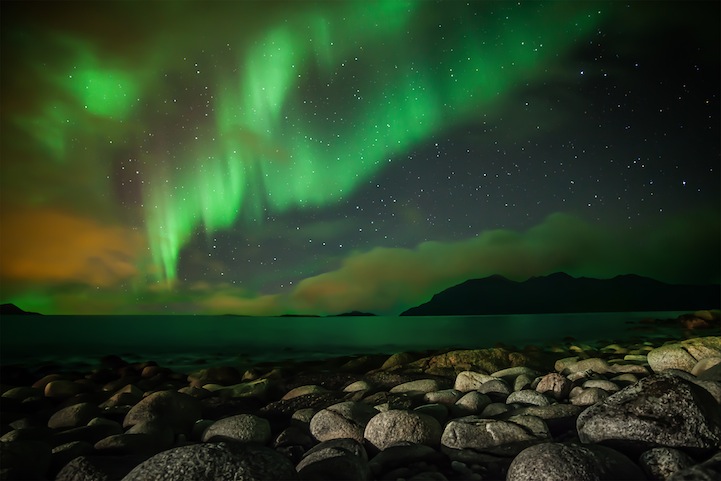
With lots of patience, landscape and astrophotographer Nicholas Buer captures the wonders of the night sky using long camera exposures. His extraordinary work features a collection of spectacular landscapes set against a vibrant night sky exploding with a striking show.
Follow Nicholas Buer: Website
MARCELL PACE
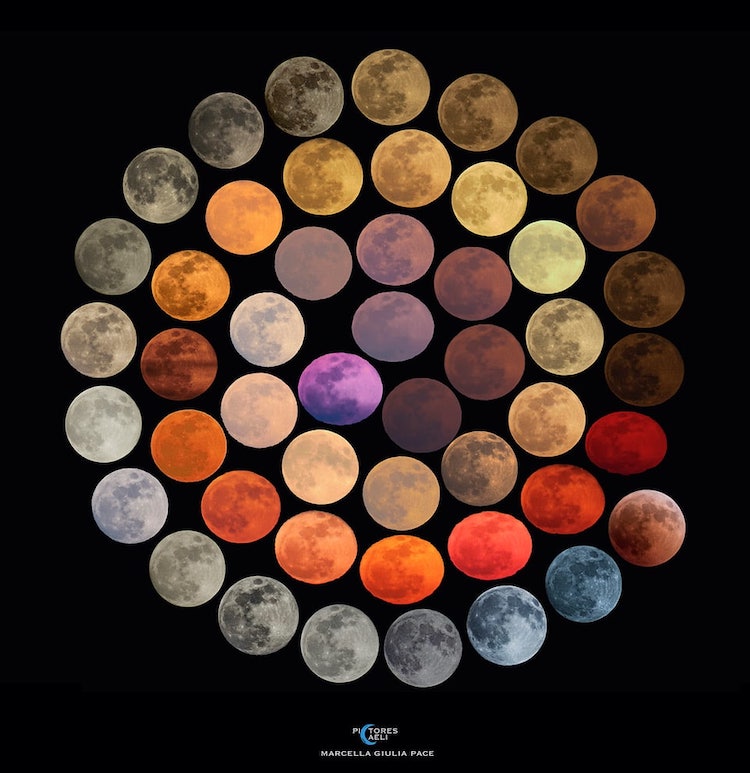
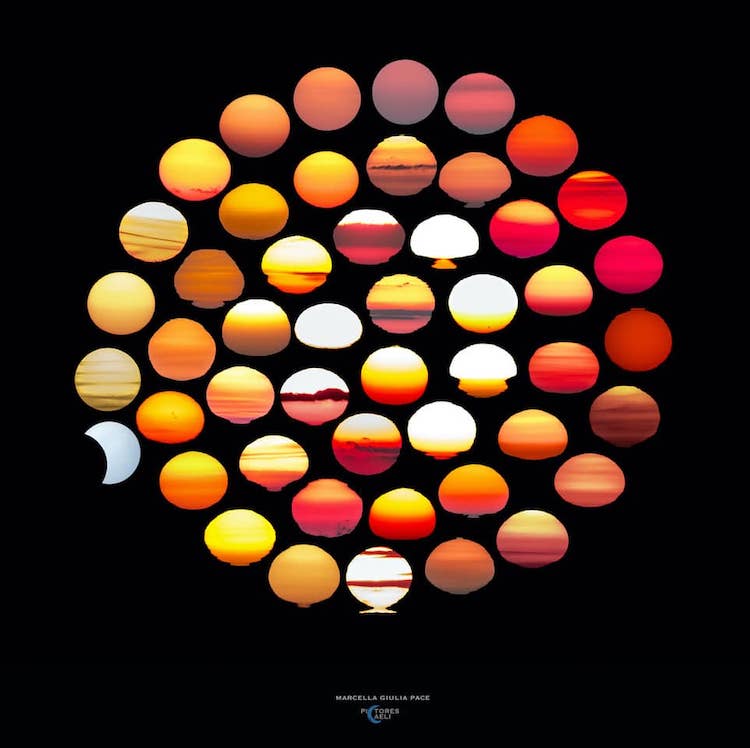
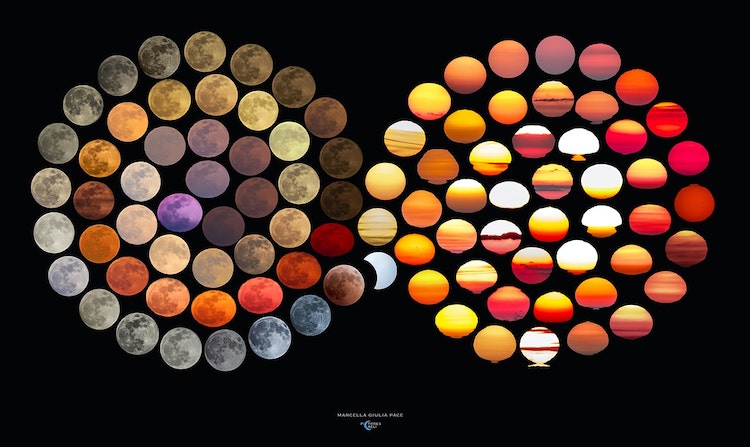
Italian school teacher turned astrophotographer Marcella Pace has a true passion for astronomy. An image of 48 colorful moons grabbed the attention of NASA and was selected as Astronomy Photo of the Day. Her colorful composites document the Moon and the many colors it takes on as it makes its way through different layers of the atmosphere. 10 years’ worth of images are truly a sight to see.
Follow Marcella Pace: Website | Instagram

![Rare Octopus With Transparent Head Caught by Blackwater Photographer [Interview]](https://www.ideasfortips.life/wp-content/uploads/2022/01/Rare-Octopus-With-Transparent-Head-Caught-by-Blackwater-Photographer-Interview-218x150.jpg)
